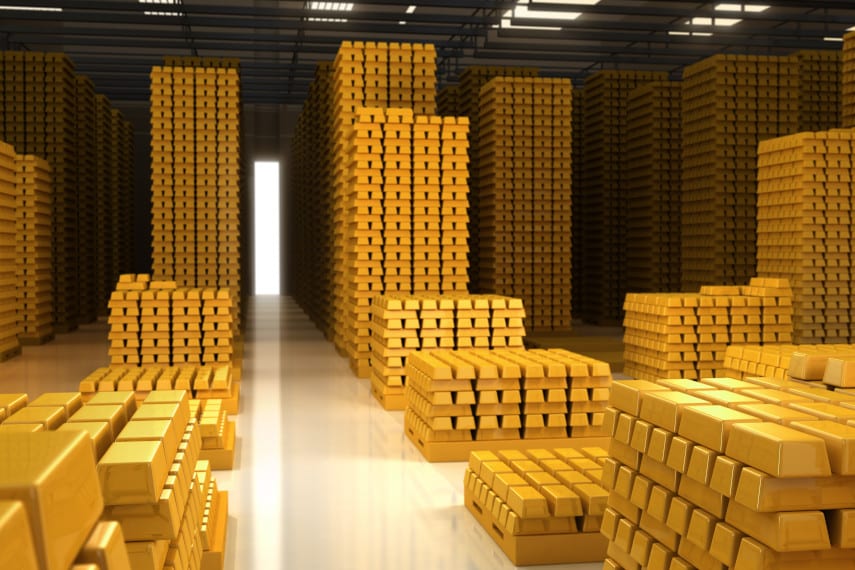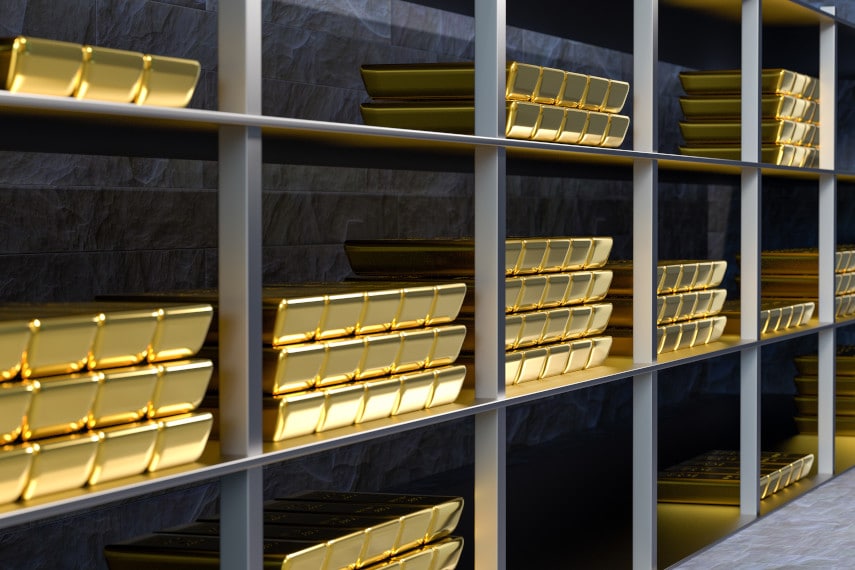
We live in a world today that is awash in money. The total M3 money supply in the United States is nearing $22 trillion. The national debt is over $30 trillion. The Federal Reserve’s balance sheet is over $9 trillion, and it can add trillions of dollars to the economy at the press of a button. And the US isn’t an anomaly.
All across the world, governments are creating more money than ever before. Inflation rates are climbing. And, as you would expect, all of this new money is buying less and less.
For most people, wages have not been keeping pace with inflation. This means that even if you’re getting raises, they may not be allowing you to afford the goods and services you’ve come to rely on.
Part of the reason for this is that certain classes of goods are rising at faster rates than others. Head to the grocery store and you’ll see prices on some goods 30-50% higher than last year. Has your salary kept pace with that? Probably not.
Gasoline prices have more than doubled since the beginning of 2021, but your salary hasn’t. And the higher the proportion of your income goes to buying staples like food and energy, the worse inflation harms you.
Why Is This Happening?
There are two primary reasons this is occurring. The first is that central bankers today, like misguided policymakers in times past, conflate money with wealth. They believe that high prices are synonymous with wealth and well-being, which is why they try to undertake policies that result in elevated asset prices.
In the wake of the 2008 financial crisis, for instance, Federal Reserve Chairman Ben Bernanke mentioned on numerous occasions that the Fed’s quantitative easing policies were intended to support housing prices and keep them elevated. Never mind that housing prices were wildly overinflated to begin with, the result of years of the Fed’s loose monetary policy. The Fed was hell-bent on keeping housing prices inflated, regardless of whether that’s what markets really wanted or not.
As a result of that, we saw the economy flooded with even more money, leading to prices rising across numerous asset classes. That’s why you’ve probably heard numerous references to the “everything bubble.” When more and more money gets forced into the financial system without a corresponding increase in production, more money ends up chasing more goods and prices inevitably rise.
The Fed’s monetary policy for the past several decades has been a slightly smaller version of the idea that “if we give everyone a million dollars we’ll all be rich.” We all know what would happen if everyone were given a million dollars at the same time. As people start to buy, prices would increase, until they reach a level commensurate with the new amount of money in the financial system.
This is an idea that has been tried time and again throughout history, under many different guises. Why the Fed doesn’t see it for what it is is anyone’s guess, but it isn’t going to end up any differently than previous money-printing quackery.
The second reason flows from the first, and that’s the belief of central bankers in the neutrality of money. That is to say that central bankers by and large believe that increases in the money supply have no effect on economic output or the structure of the economy in the long run.
They believe that monetary changes have short-run effects, which is why they will loosen or tighten monetary policy to achieve certain policy aims. But they don’t believe that the changes they make will have any long-term effects.
That’s a puzzling belief, particularly in the face of the evidence to the contrary. Economists of the Austrian School are among those who point out the effects of monetary manipulation on the structure of production. The malinvestments that result from central bank monetary policy are what underpin the boom and bust of the business cycle.
Whether it’s by lowering interest rates or injecting money into the economy through quantitative easing, the creation of new money incentivizes certain types of economic activity that wouldn’t be feasible without that new money. The structure of production is altered and resources are diverted to different sectors of the economy.
The bust phase is when we find out just how that resource diversion worked, as industries realize that consumer demand just isn’t there. The boom turns to bust, people get laid off, and companies go bankrupt.
Yet despite this boom-bust cycle occurring repeatedly over the years, and despite the obvious malinvestment and misallocation of resources, central banks steadfastly refuse to admit that their monetary policy is responsible for any of that. Because of that, they continue to solve every problem by creating more money, leading to even more booms and busts.
Excessive Money Creation Is the Albatross Around Our Necks
A world awash in money isn’t a blessing, it’s a curse. Because production hasn’t increased, more money is chasing the same amount of goods, and prices increase as a result.
These effects don’t happen instantaneously, however. So those who are able to see what’s going on, or who receive the effects of the newly created money first, are able to benefit from the new money before prices rise. Those who aren’t so lucky get to watch prices rise and rise and rise first, then they get to purchase these more expensive goods with their devalued dollars.
More and more people today are concerned that rising inflation and the falling value of the dollar are going to be the most important economic issues facing our society. Whether you’re 30 or 60, inflation and devaluation could have a major impact on your finances.
If you’re younger, inflation will drive up your cost of living and leave you with less ability to save. And any savings and investments you make will have their gains eroded by inflation.
If you’re older, inflation will also drive up your cost of living, but it will also reduce the purchasing power of your retirement savings. So if you thought you saved enough money for retirement, you may find out the hard way that you don’t have enough money.
No one knows yet how long inflation will be with us, or how high it may get. But many are beginning to fear a return of stagflation. Stagflation first reared its head in the 1970s, as inflation reached double digits and the economy stagnated. If inflation persists this decade, and becomes as problematic as it was in the 1970s, it doesn’t bode well for Americans.
That’s why more and more people are trying to protect their assets and put themselves into a position where they might be able to keep their wealth from losing too much to devaluation. And they’re doing that by buying gold and silver.
Gold and silver’s average annualized gains during the 1970s were over 30%, providing one bright spot during an otherwise gloomy decade. And if gold and silver end up performing as well this decade as they did during the 1970s, owners of these precious metals could end up being very happy.
Whether you’re looking to protect your retirement savings against inflation with a gold IRA or just looking to buy gold and silver coins for a rainy day, there are numerous options available to you. Call the precious metals experts at Goldco today to learn more about how gold and silver can help protect your hard-earned wealth from the ravages of inflation.






